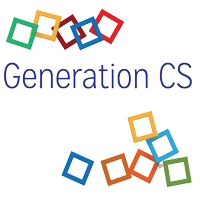Volunteer for the Annual Data Buddies Survey!
By CERP Staff
 The annual CRA Data Buddies Survey, managed by the Center for Evaluating the Research Pipeline (CERP), will be sent to more than 120 academic departments across the United States and Canada this coming October. Through this survey, CERP collects data from undergraduate and graduate students in computing-related degree programs (e.g., computer science, computer/software engineering, information technology, etc.).
The annual CRA Data Buddies Survey, managed by the Center for Evaluating the Research Pipeline (CERP), will be sent to more than 120 academic departments across the United States and Canada this coming October. Through this survey, CERP collects data from undergraduate and graduate students in computing-related degree programs (e.g., computer science, computer/software engineering, information technology, etc.).
Data collected through Data Buddies helps (a) inform the computing community about patterns related to academic persistence and retention and (b) bolster efforts to broaden participation in the field. One way CERP fulfills this goal is by publishing monthly infographics in CRN.
Considerations for the level of effort from your department:
- A person (faculty or administrative staff) from the department will need to send out approximately three emails over the course of 2-3 months: first to distribute the survey and two additional emails as reminders. No additional effort for recruitment is required but is encouraged to increase your students’ response rates.
- CERP prepares all materials for you (e.g., text for emails, survey links, outreach to IRB, etc.).
- Data collection occurs on an annual basis, typically between October and January.
In exchange for your time, CERP provides you with a report that summarizes your students’ data compared to similar institutions. Check out a sample report here!
Is your department a Data Buddy? If not, sign-up by completing CERP’s short form. Your department does not need to be a CRA member to join the project.
 This message is brought to you by the CRA Center for Evaluating the Research Pipeline (CERP). CERP provides social science research and comparative evaluation for the computing community. Subscribe to the CERP newsletter here to keep up with the latest news from CERP.
This message is brought to you by the CRA Center for Evaluating the Research Pipeline (CERP). CERP provides social science research and comparative evaluation for the computing community. Subscribe to the CERP newsletter here to keep up with the latest news from CERP.
Data Buddies Survey is supported by the National Science Foundation under grant numbers CNS-1246649, DUE-1431112, and DUE 1821136. Any opinions, findings, and conclusions or recommendations expressed in this material are those of the author(s) and do not necessarily reflect the views of the National Science Foundation.



